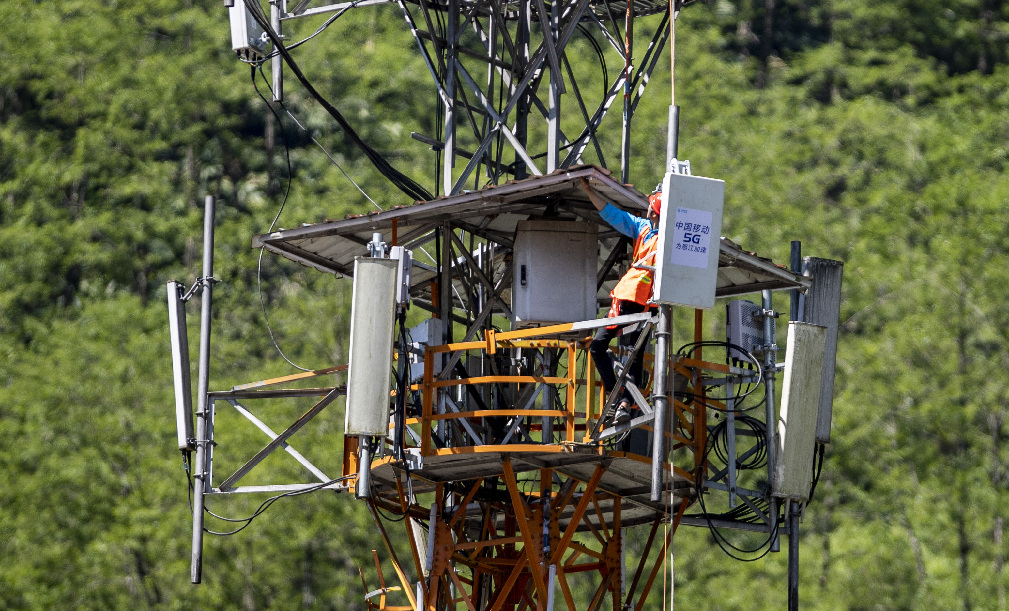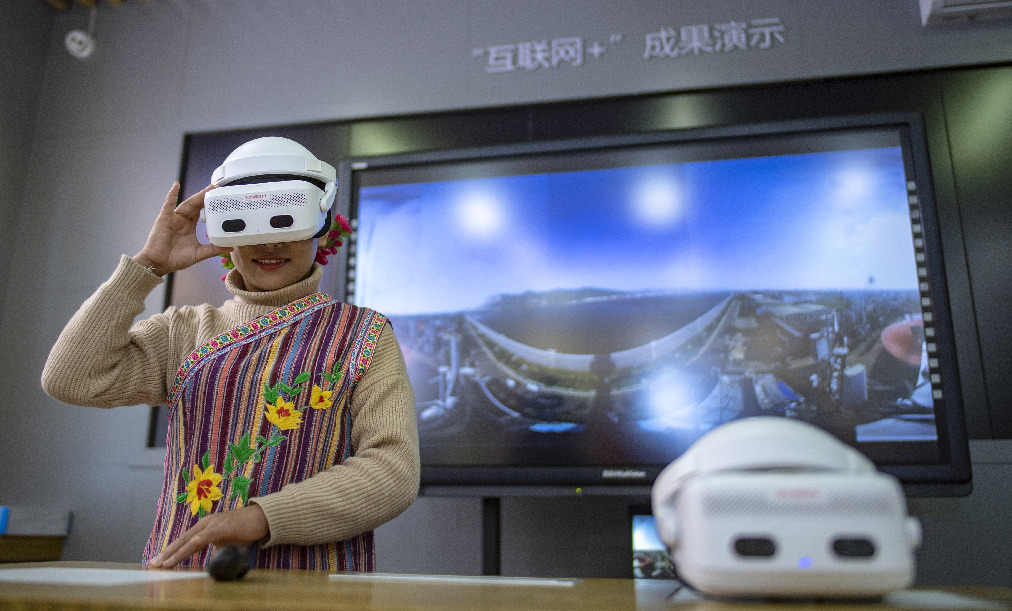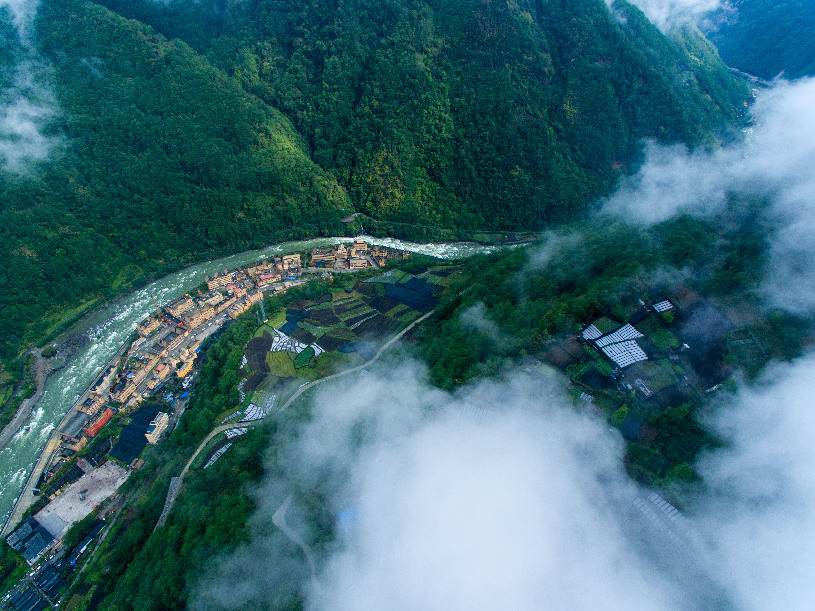
A technical worker installs 5G devices in Dulongjiang Township, southwest China's Yunnan Province. (Xinhua/Jiang Wenyao)
KUNMING, July 1 (Xinhua) -- Xiong Yulan, 32, still harbors childhood memories of the thundering explosions that once served as signal pistols to summon villagers for rallies.
Firing gunpowder was the most efficient way to send messages in Xiong's hometown, Dulongjiang Township, in the early 1990s, when no phones were available in the area nestled along the deep gorges of the Dulong River in southwest China's Yunnan Province bordering Myanmar.
With the testing of a 5G base station by China Mobile two months ago, however, the once-reclusive township is entering the era of 5G.
Wearing virtual reality (VR) glasses with the support of the 5G network, Xiong was immersed in real-time sceneries of Kunming, Yunnan's provincial capital, about 900 kilometers away.
"It's wonderful. I feel like I'm there," she said. "I want to reach out and touch the buildings and moving cars 'next to' me."

Xiong Yulan, a woman of Dulong ethnic group, tries VR (Virtual Reality) glasses supported by 5G network in Dulongjiang Township, southwest China's Yunnan Province, April 19, 2019. (Xinhua/Jiang Wenyao)
Xiong's township and adjacent areas are a major habitat for people of the ethnic Dulong group, one of the least populous of China's 56 minority nationalities. The latest national census, conducted in 2010, showed that about 7,000 ethnic Dulong people had been living across China.
Ethnic Dulong people's journey from primitive means to a taste of the speedy 5G network has not been easy.
On display at the Dulong museum are the communication tools used by Xiong's ancestors prior to 1949: carved planks with different marks to record and send messages such as chieftain's order, debt among villagers and lists of engagement presents.
The Dulong people only managed to bid farewell to the primitive life after the founding of New China in 1949.
Since then, they stepped into the socialist society and were gradually exposed to the outside world by the continuous upgrade of communication technology.
Gao Derong, former head of the government of Gongshan County which administers Dulongjiang Township, has been both the witness and a key player in the transformation.
In the 1980s, village officials had to spend more than 10 days walking door to door to inform dozens of households scattered in different places in the mountainous village of Silaluo, Dulongjiang Township, of the time for a meeting.
One day, an idea came to Gao's mind, who then worked with the township government, to use gunpowder to inform villagers.
"For important meetings, village officials would carry out two explosions and one for other occasions," recalled Gao, now 65.

Aerial photo taken on April 18, 2019 shows Dulongjiang Township in southwest China's Yunnan Province. (Xinhua/Jiang Wenyao)
This method had been used for over 10 years.
On Oct. 2, 2004, the mobile communication network was installed in the township, connecting the last of the areas largely inhabited by China's ethnic minority groups to mobile phones.
"The mobile communication base station put an end to generations of isolation of the ethnic Dulong people from the rest of the world," Gao said.
Ten years later, all six administrative villages and scenic spots in Dulongjiang Township were covered by the 4G network.
In recent years, the Dulong people are embracing modern life at a faster pace thanks to the internet. Video chatting, mobile payment and online shopping are popular in the township.
"We can surf the internet, buy clothes and shoes online and sell local specialties through the internet," Xiong said.
"In the past, the Dulong people were secluded from the outside world, but today we keep pace with other regions and even developed coastal cities to enter the era of 5G technology," said Gao.



